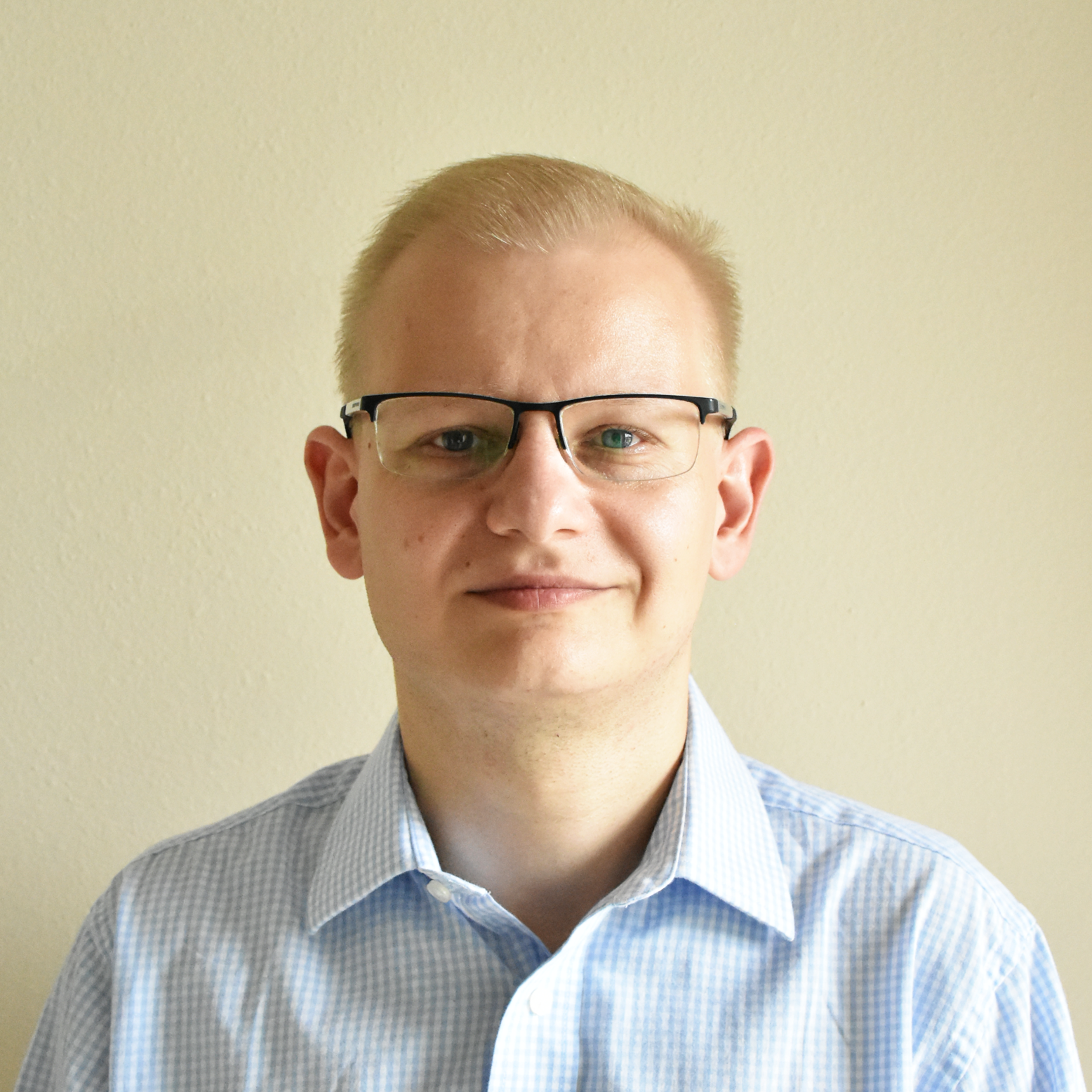-
About Us
Keith J. Stine, Chair
Mission Statement
Degree Offerings
Department Photos
Outreach Activities
-
Undergraduate Studies
Undergraduate Degrees
Undergraduate Program Advising
Undergraduate Scholarships and Awards
Research for Undergraduates
Resources
-
Graduate Studies
Graduate Program Overview
Graduate Degrees
Application to Graduate Program
Graduate Awards
Graduate Program Contact Information
-
Faculty
Faculty Contact Information
Inorganic
Organic
Analytical/Physical
Biochemistry
Chemistry Faculty Awards
-
Staff
-
Seminar Programs
Archive
Graduate Student Seminars
Robert W. Murray Lecture
Distinguished Alumni Lecture
-
Departmental News
News Archive
-
Facilities
High Field NMR Facility
MIST Lab
X-Ray Diffraction Facility
-
Alumni Interests
UMSL Chemists
Important Dates
Distinguished Alumni
Alumni Lecturers
-
Contact Information
 |
Professor Szatkowski received MS and PhD degrees from the Lodz University of Technology, Poland and performed postdoctoral research at Texas A&M, and Arizona Universities. Between 2018 and 2020 he taught at the University of Cincinnati as Visiting Assistant Professor and then held an Assistant Professor of Chemistry position at the University of South Carolina-Sumpter prior to joining the UMSL Chemistry and Biochemistry faculty in 2022 as Assistant Teaching Professor. |
lszatkowski@umsl.edu Office: B419 |
Research Interests
Professor Szatkowski has published extensively in the area of Physical and Computational Chemistry and Biophysics. His research interest includes the use of a wide range of computational chemistry methods, from quantum chemistry to coarse-grained molecular dynamics to understand the mechanism of important chemical reactions, properties, and reactivity of transition metal complexes, the interaction of polymers with proteins, and their reactivity, and the dynamics properties of biologically important large protein systems.
Selected Publications For more publications see his google Google Scholar page.
″Modeling the Mechanical Response of Microtubule Lattices to Pressure″, L. Szatkowski, R. A Varikoti, R. I, Dima, J. Phys. Chem. B, 2021, 125, 5009.
″The Mechanics of the Microtubule Seam Interface Probed by Molecular Simulations and In Vitro Severing Experiments″ L. Szatkowsk, D. R. Merz, N., Jiang, I. Ejikeme, L. Belonogov, J. L. Ross, R. I. Dima, J. Phys. Chem. B, 2019, 123, 4888.
″Proof of principle that molecular modeling followed by a biophysical experiment can develop small molecules that restore function to the cardiac thin filament in the presence of cardiomyopathic mutations,″,L. Szatkowsk, M. Lynn, M. Williams, A. Baldo, J. Tardiff, and S. D. Schwartz, ACS Omega, 2019, 4, 6492.
″Mechanical Stability of Microtubule Lattices - Molecular Dynamic Indentation Studies″, L. Szatkowsk, D. R. Merz, J. L. Ross, and R. I. Dima, Biophys. J. 2019, Suppl. 1 to 116, 257A.
″Molybdenum Trihydride Complexes: A Computational Model of H2 Elimination Reaction From 17-electrons Molybdenum Complexes, L. Szatkowsk and M. B. Hall, Inorg. Chem. 2017, 56 (16), 9653